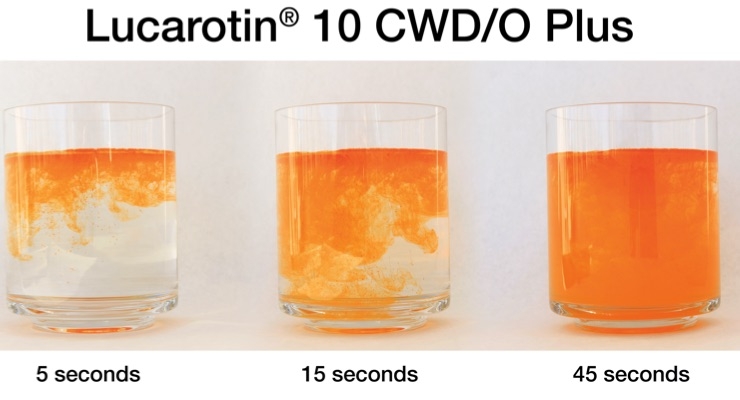Products & Ingredients
BASF Launches 10% Beta-Carotene Colorant
Powder designed to replace artificial dye in beverages, food, and nutrition products.

By: Sean Moloughney

Targeting formulators looking to replace Azo dyes yellow 5 and 6 in beverages, soups, confections and nutrition products, BASF has launched Lucarotin 10 CWD (Cold Water Dispersible) / O (Orange) Plus, an orange colorant.
The 10% beta-carotene powder is a “nature-identical” color option that is typically labeled as beta-carotene (color) in the U.S. It disperses quickly and easily without adversely impacting the product’s sensory characteristics, the company said. The active ingredient is an exempt color additive (21 CFR part 73) that is derived from natural or nature identical sources, and is therefore exempt from the FDA certification process. BASF’s Lucarotin portfolio of yellow and orange-red colors conform to the Code of Federal Regulations (CFR) and meets the regulatory requirements for use as a color in most countries.
This newest launch delivers ease of use and stability, even when used at cold temperatures. Beverage and confection producers value this ease of use to avoid quality issues that can result when a colorant does not disperse properly. In side-by-side comparison tests with competitive products, Lucarotin consistently disperses significantly more quickly, the company claimed.
“BASF’s Lucarotin beta-carotene products are stable to light and heat and work especially well in beverages, soups, and confections,” said Brad Hayhoe, carotenoids regional product manager, BASF Nutrition & Health, North America. When you combine these technical benefits with Lucarotin’s robust color, it’s a win for both formulators and consumers. Depending on the application and amount of Lucarotin used, food producers may include a vitamin A or antioxidant label claim.
“Market research shows that consumers taste with their eyes so color directly impacts how a product is perceived. This phenomenon combined with consumers’ growing desire for simpler labels is driving interest in innovations like Lucarotin,” Mr. Hayhoe explained.
In 2015, the global market in natural colors was worth an estimated $970 million, up 60% since 2011, according to the New York Times. Natural colors now represent more than half the food-colors market in dollar terms. As the market continues to grow for allergen-free and vegan colors, and as consumers demand more natural solutions, BASF’s applications team is helping support formulators with hands-on training and color-matching guidance.


